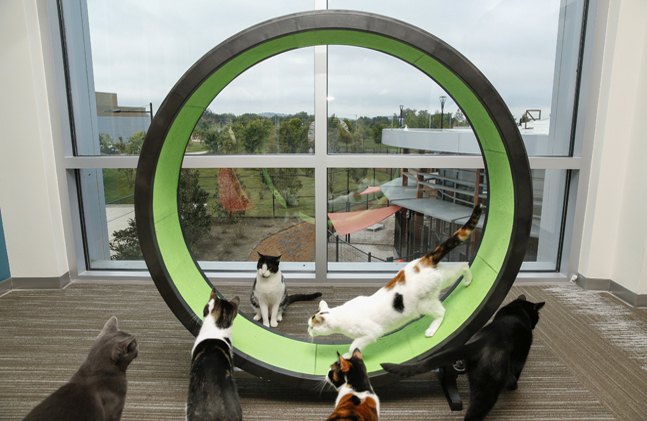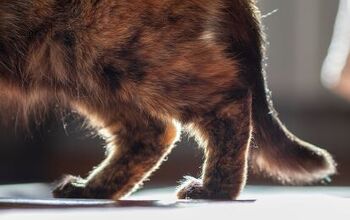Does Pet Food Line Owned By Chocolate Company Have Solution For Fat Pe

While I jokingly call her my “roly poly”, my fat feline FiFi has certainly packed on the pounds since joining my household. I never really noticed the extra inches until a family member who hadn’t seen her for a while gasped (seriously, gasped!) when she came waddling over to greet them.
Apparently I’m not alone when it comes to porky pets. The State of Pet Health as reported by Banfield Pet Hospital suggests the rate of overweight or obese pets has reached epidemic levels in the US and Mars Petcare (yep, the same people who make those ultra-gooey chocolate bars) has put together some tips for managing weight – especially in our felines – spurred by Pet Obesity Awareness Day. That’s right, there is a day that is actually dedicated to our fat pets!
Related: Do I Have A Fat Dog? How To Tell If Your Dog Is Overweight
According to their stats, 1 in 4 dogs and 1 in 3 cats who visit a veterinary clinic are overweight or obese which means they are at tremendous risk of health related issues including arthritis, heart disease, respiratory problems and diabetes.
But fear not. Help has arrived in the form of a candy-bar manufacturer (sorry, Mars Petcare US) whose team of behaviorists and veterinarians have identified “environmental enrichment” as being key to solving the paunchy predicament. For cats, environmental enrichment takes the form of sensory stimulation, physical activity and socialization with other cats and people. According to Dr. Tiffany Bierer, Health and Nutrition Manager for Mars Petcare US, “These activities allow cats to stimulate their senses and satisfy their instincts and natural behaviors.”
Related: How Much Should I Feed My Cat?
Studies took place at Mars’ US based Global Innovation Center which cares for up to 120 cats – many of which are adopted from area shelters and rescues. The resident felines are on a schedule that includes play time with caregivers such as climbing, puzzles and exercise wheels that encourage both activity and structured exercise. According to Bierer, these play dates encourage cats to exhibit natural behaviors such as chasing and pouncing that are associated with hunting. Yes, coming from a multi-cat household I can confirm that sneak attacks from behind doors are part of our daily ritual. And because climbing is also inherent to kitties, the socialization areas and communal rooms have been specially designed to encourage this type of fun.
Not surprising, weight loss/control for our pets mirror that for humans. Portion control, fewer treats, and exercise that is fun and will keep us engaged. And for sensory stimulation, food puzzles where they have to work for their treats or hiding treats throughout the house will keep them active and mentally stimulated.

Sharing space with three seriously judgy Schnoodles and a feline who prefers to be left alone. #LivingMyBestLife
More by Mary Simpson























